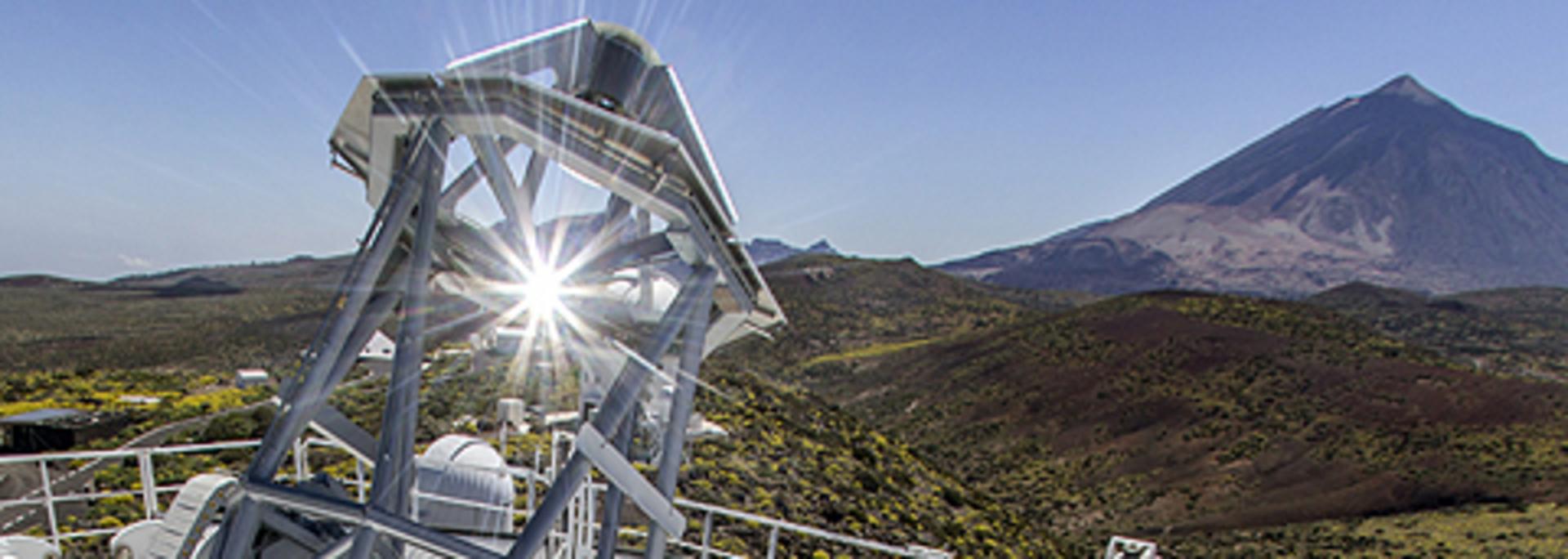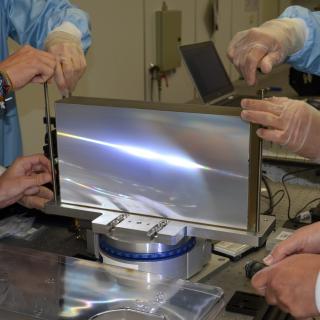GREGOR Solar Telescope


The 1.5 m solar telescope GREGOR was built at the Observatorio del Teide by a German consortium led by the Kiepenheuer-Institut für Sonnenphysik, with the Leibniz-Institut für Astrophysik Potsdam, the Max-Planck-Institut für Sonnensystemforschung Lindau and the Institut für Astrophysik Göttingen (until 2008) as partners. The Instituto de Astrofísica de Canarias and the Astromomical Institute of the Academy of Sciences of the Czech Republic contributed to the telescope or the instrumentation. Since 2014 GREGOR is used for scientific observations.
GREGOR is the largest solar telescope in Europe. It is designed for observations of the solar photosphere and chromosphere in the visible and near infrared.
The scientific Instrumentation includes BBI, GRIS, GFPI, BIC/HIFI, and ZIMPOL. GREGOR is equipped with a high-order adaptive optics system.
The optical configuration is a Gregory coudé using 3 powered mirrors including an f/1.75 light-weighted primary mirror with 1.5 m aperture. A cooled field stop at the prime focus provides a field of view of 300 arcsec. A polarimetry package is located near the secondary focal plane, before the first oblique reflection. A derotator and an adaptive optics system are located close to the tertiary focus, delivering a stabilized science image to several post focus instruments. The effective focal length is about 60 m and the final focal plane can be placed in two laboratories.
Open Telescope GREGOR is designed as a completely open telescope with a retractable dome, to avoid internal seeing. It is designed to perform fully under conditions of strong wind. The telescope structure has an Alt-Azimuth mount and a direct pointing capability accuracy of 0.25 arcsec.
Lightweight Technology The first three mirrors are made of light weighted carbon reinforced silicon carbide (Cesic), resulting in a weight of only 170 kg for the 1.5 meter primary. The Cesic material has high thermal conductivity more than 50 times that of Zerodur which results in a very homogeneous mirror temperature and allows back side air cooling the telescope points to the sun. Active cooling of the mirror is necessary to quench seeing resulting from sunlight absorbed at the mirror surface.
The magnetic activity of the sun plays a dominant role in virtually all processes in the solar atmosphere. It is responsible for the energy balance of the outer atmosphere, it causes the activity cycle and the concomitant variability of the solar luminosity, and it produces most of the sometimes spectacular phenomena like sunspots, prominences, flares and coronal mass ejections. Theoretical studies and numerical computations suggest that much of the interaction between the solar plasma and the magnetic field occurs on very small spatial scales of about 70 km on the Sun, corresponding to an angle of 0.1 arcsec. It is therefore important to have a large enough telescope which can resolve such small details. In addition, a large aperture is needed to achieve the photometric accuracy and sensitivity needed for a quantitative physical understanding of the solar magnetic field.
